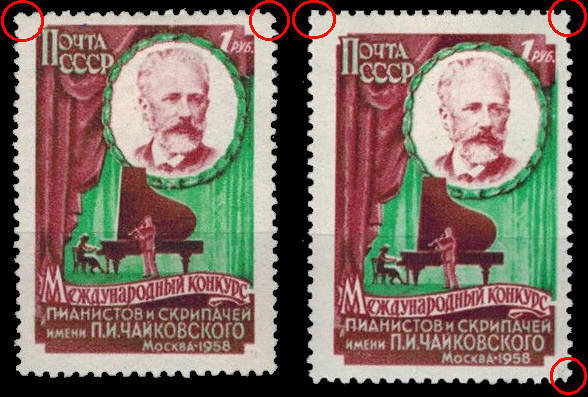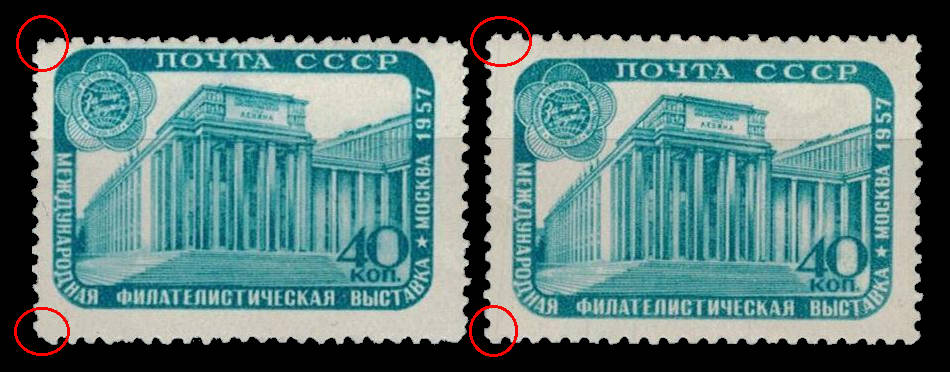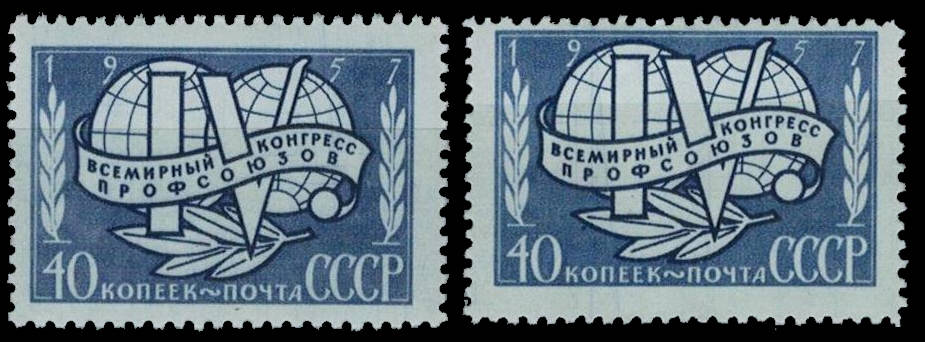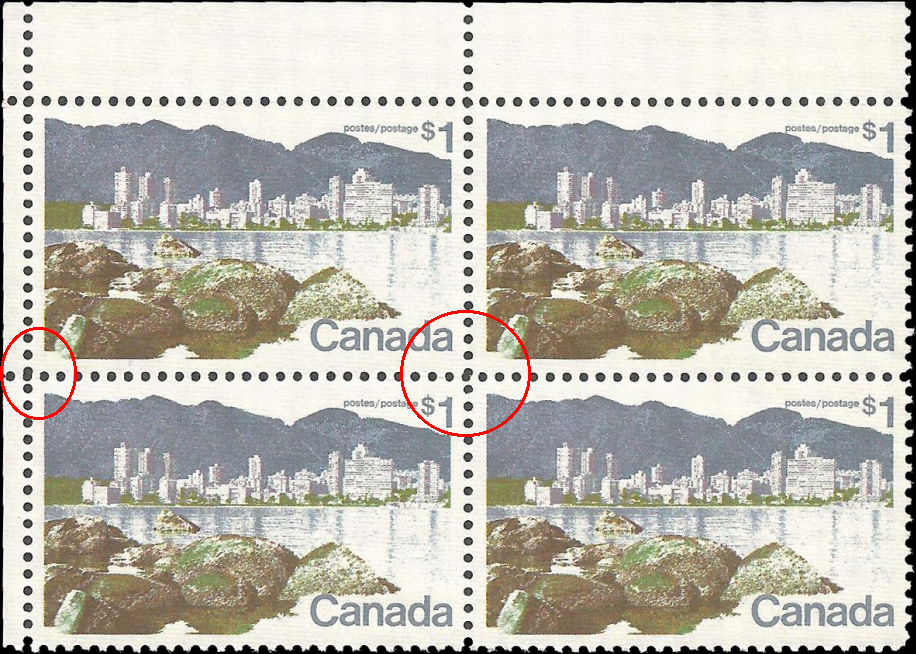Philatelic Articles: Line vs Comb Perforations. How to tell the difference.
In a continuation of our series of informative articles to help collectors identify stamp varieties, we are now going to try and explain one of the least understood varieties in stamps: namely, how to tell the difference between “line” & “comb” perforated stamps. Sometimes the difference in value & rarity can be quite significant.
The most common type of perforation used by most postal administrations today is the “Comb” perforation. The comb perforator process perforates three sides of a stamp at once for an entire column or row. The process is automated and once one row or column is perforated, the perforation process is advanced one row or column to perforate the next row or column until the entire sheet is perforated. This produces a very regular perforation pattern and all perforations are equal and regular. A determining feature of most comb perforations are the equal & regular corner perforations like the image below
The Image on the right is a Comb perf while the image on the left is a Line perf (explained further down)

Now, lets compare this with the older, and now rarely used Line perforators. Line perforators simply consist of a single row of perforation pins and are arranged in a straight line.
The process begins by perforating the top edge of the sheet, then the sheet of stamps is shifted down by the height of a row of stamps to perforate the next row of stamps at the upper edge and is repeated until the lower sheet margin is perforated. In this way, the sheet is now perforated horizontally. Now the sheet is rotated 90 degrees and the process begins again at the top of the sheet until the bottom of the sheet is perforated. This process of perforating one row at a time, can lead to stamps of different size (as sometimes the shifting of a row is not the same as the previous shift) and this leads to stamp of different sizes. Since the vertical & horizontal perforations are done in many separate steps, haphazard corner perforations are produced and are markedly different in appearance from line comb perforated stamps. Consider a sheet of stamps that is 25 x 25. This would require 52 individual perforation steps, each possibly being offset by a small amount, resulting in very irregular corner shapes, that is characteristic of line perforated stamps. Lets look at some examples. The Image on the right is a Comb perf while the image on the left is a Line perf

Now, why all the fuss you say. If you look at Russian stamps of the 1930’s and 40’s, there are significant differences in values based on the perf type and it is VERY worthwhile to know the difference, especially when you are looking thru a dealers stock who has not done his or her homework. In the world of philately, detailed knowledge is power, so use it to your advantage.
Now I will let you decide which of these following stamps are is line or comb.


I hope you can make use of this article for your philatelic enjoyment and education!
Happy hunting, Marios
